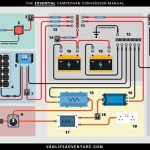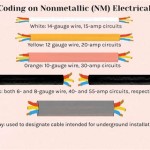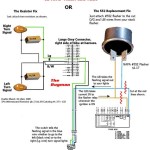Fender Wiring Diagrams are schematic diagrams specific to Fender guitars, providing detailed instructions on how to wire the guitar’s electrical components, such as pickups, switches, and potentiometers. These diagrams guide luthiers and guitar enthusiasts in assembling and modifying Fender guitars to achieve desired tonal characteristics and functionality.
Fender Wiring Diagrams are crucial for understanding and customizing the electrical system of Fender guitars. They enable precise wiring of pickups, allowing for various pickup configurations (e.g., single-coil, humbucker) and switching options. Furthermore, these diagrams facilitate troubleshooting and repair by providing a visual representation of the guitar’s wiring, making it easier to identify and address any electrical issues.
A notable historical development in Fender Wiring Diagrams is the introduction of the Telecaster in 1950, which featured a groundbreaking control plate with a single pickup selector switch and volume and tone controls. This wiring design became the foundation for many subsequent Fender guitar models and set the standard for electric guitar wiring.
In the following article, we will delve deeper into the intricacies and applications of Fender Wiring Diagrams, exploring their significance in the world of guitar building and modification.
Fender Wiring Diagrams are an essential resource for understanding and customizing Fender guitars. They provide detailed instructions on how to wire the guitar’s electrical components, such as pickups, switches, and potentiometers, to achieve desired tonal characteristics and functionality. The various aspects of Fender Wiring Diagrams encompass technical specifications, historical significance, practical applications, and more.
- Schematic Representation: Fender Wiring Diagrams are schematic diagrams that visually represent the electrical connections within a Fender guitar.
- Wiring Configurations: They provide instructions for wiring various pickup configurations, such as single-coil, humbucker, and P-90 pickups, and switching options like pickup selector switches and coil-splitting.
- Tonal Customization: By following these diagrams, guitarists can customize the tone of their Fender guitars by selecting different pickup combinations and wiring options.
- Troubleshooting and Repair: Fender Wiring Diagrams aid in troubleshooting and repairing electrical issues by providing a clear visual representation of the guitar’s wiring.
- Historical Evolution: The evolution of Fender Wiring Diagrams reflects the development of Fender guitars, from the early Telecaster to modern models.
- Industry Standard: Fender Wiring Diagrams have become an industry standard for electric guitar wiring, influencing the designs of other guitar manufacturers.
- Educational Value: These diagrams are valuable educational tools for guitarists and luthiers, providing insights into the electrical principles behind guitar design.
- Online Accessibility: Fender Wiring Diagrams are widely available online, making them easily accessible to guitarists and enthusiasts.
In summary, Fender Wiring Diagrams are an indispensable resource for guitarists, luthiers, and anyone interested in understanding and customizing Fender guitars. They provide a comprehensive guide to the electrical wiring of these iconic instruments, enabling users to achieve their desired tonal characteristics, troubleshoot issues, and explore the historical evolution of Fender guitar design.
Schematic Representation
Schematic representation is a fundamental aspect of Fender Wiring Diagrams, providing a visual representation of the electrical connections within a Fender guitar. These diagrams are essential for understanding the wiring of Fender guitars and customizing them to achieve desired tonal characteristics and functionality.
- Components and Symbols: Fender Wiring Diagrams use standardized symbols to represent electrical components such as pickups, switches, potentiometers, and capacitors. This universal language allows guitarists and luthiers to easily understand and interpret the diagrams.
- Wiring Paths: The diagrams clearly illustrate the paths of electrical signals through the guitar’s components. This helps users trace the signal flow and identify potential issues or modification points.
- Grounding and Shielding: Fender Wiring Diagrams show the proper grounding and shielding techniques to minimize noise and interference. This is crucial for achieving a clean and quiet guitar sound.
- Troubleshooting: Schematic representation aids in troubleshooting electrical problems. By visually tracing the signal path, users can identify potential points of failure or incorrect connections.
In summary, the schematic representation of Fender Wiring Diagrams provides a comprehensive visual guide to the electrical connections within a Fender guitar. These diagrams enable users to understand the wiring, troubleshoot issues, customize their guitars, and appreciate the intricate details of Fender guitar design.
Wiring Configurations
Wiring configurations are a critical component of Fender Wiring Diagrams. They provide detailed instructions on how to wire various pickup configurations, such as single-coil, humbucker, and P-90 pickups, and switching options like pickup selector switches and coil-splitting. By understanding these wiring configurations, guitarists can customize the sound and functionality of their Fender guitars to suit their playing styles and tonal preferences.
For example, a Fender Stratocaster with a traditional three-single-coil pickup configuration can be modified to have a humbucker in the bridge position, providing a thicker and more powerful sound. Alternatively, a Fender Telecaster with a single-coil pickup in the bridge position can be modified to have a P-90 pickup, resulting in a warmer and more vintage-style tone.
Pickup selector switches allow guitarists to choose which pickup or combination of pickups is active, providing a wide range of tonal options. Coil-splitting is a technique that allows humbucker pickups to be split into their individual coils, effectively creating a single-coil sound. This versatility makes Fender guitars highly adaptable to different musical genres and playing styles.
Understanding wiring configurations is essential for guitarists who want to modify or build their own Fender guitars. By following the detailed instructions provided in Fender Wiring Diagrams, guitarists can achieve their desired tonal characteristics and functionality, unlocking the full potential of their instruments.
Tonal Customization
Tonal customization is a critical component of Fender Wiring Diagrams, providing guitarists with the ability to shape the sound of their instruments to match their playing styles and musical preferences. By following the detailed instructions provided in these diagrams, guitarists can select different pickup combinations and wiring options to achieve a wide range of tonal possibilities.
For example, a Fender Stratocaster with a traditional three-single-coil pickup configuration can be modified to have a humbucker in the bridge position, providing a thicker and more powerful sound. Alternatively, a Fender Telecaster with a single-coil pickup in the bridge position can be modified to have a P-90 pickup, resulting in a warmer and more vintage-style tone.
Pickup selector switches allow guitarists to choose which pickup or combination of pickups is active, providing a wide range of tonal options. Coil-splitting is a technique that allows humbucker pickups to be split into their individual coils, effectively creating a single-coil sound. This versatility makes Fender guitars highly adaptable to different musical genres and playing styles.
Understanding the tonal customization capabilities of Fender Wiring Diagrams is essential for guitarists who want to optimize the sound of their instruments. By experimenting with different pickup combinations and wiring options, guitarists can unlock the full potential of their Fender guitars and achieve their desired tonal characteristics.
In summary, tonal customization is a key aspect of Fender Wiring Diagrams, allowing guitarists to customize the sound of their instruments to suit their individual needs and preferences. This understanding empowers guitarists to shape their tone, explore new sonic possibilities, and create their own unique musical voice.
Troubleshooting and Repair
Fender Wiring Diagrams are indispensable for troubleshooting and repairing electrical issues in Fender guitars. These diagrams provide a clear visual representation of the guitar’s wiring, allowing users to trace the signal path and identify potential problems. This is particularly useful when dealing with complex wiring configurations or intermittent issues that may be difficult to diagnose otherwise.
For example, if a guitar is experiencing a loss of sound or intermittent crackling, the wiring diagram can help identify loose connections, faulty components, or grounding issues. By following the diagram and systematically checking each component, users can pinpoint the source of the problem and make the necessary repairs.
The ability to troubleshoot and repair electrical issues using Fender Wiring Diagrams empowers guitarists and luthiers to maintain their instruments in optimal condition. This not only ensures reliable performance but also extends the lifespan of the guitar and preserves its value.
In summary, Fender Wiring Diagrams are essential tools for troubleshooting and repairing electrical issues in Fender guitars. By providing a clear visual representation of the guitar’s wiring, these diagrams enable users to identify and resolve problems efficiently, ensuring optimal performance and longevity of their instruments.
Historical Evolution
The historical evolution of Fender Wiring Diagrams is inextricably linked to the development of Fender guitars. As Fender guitars evolved over the decades, so too did the wiring diagrams that guide their assembly and modification. This evolution encompasses various aspects, including:
- Early Telecaster Wiring: The Telecaster, introduced in 1950, featured a simple wiring diagram with a single pickup, volume control, and tone control. This basic configuration laid the foundation for future Fender guitars and established the standard for single-coil pickup wiring.
- Stratocaster Innovations: The Stratocaster, introduced in 1954, introduced several innovations in guitar wiring. Its three single-coil pickups and five-way selector switch provided a wider range of tonal options. The addition of a middle pickup also allowed for hum-canceling combinations.
- Humbucker Era: In the 1950s, Fender introduced humbucking pickups as an alternative to single-coil pickups. Humbuckers, with their dual coils, offered a thicker, less noisy sound. Fender Wiring Diagrams evolved to accommodate these new pickups, providing instructions for wiring humbuckers in various positions.
- Modern Versatility: Modern Fender guitars offer a vast array of wiring options, reflecting the diverse needs of contemporary guitarists. Fender Wiring Diagrams have kept pace with these advancements, providing detailed instructions for wiring active pickups, coil-splitting, and other modifications.
The historical evolution of Fender Wiring Diagrams mirrors the journey of Fender guitars, reflecting the company’s commitment to innovation and player-centric design. These diagrams have enabled guitarists and luthiers to customize and repair Fender guitars throughout history, contributing to their enduring popularity and relevance.
Industry Standard
Fender Wiring Diagrams have become the industry standard for electric guitar wiring due to their comprehensive nature, historical significance, and widespread adoption. This standardization has a profound impact on the designs of other guitar manufacturers, as well as the overall landscape of electric guitar building and modification.
One of the key reasons for the widespread adoption of Fender Wiring Diagrams is their detailed and systematic approach to guitar wiring. These diagrams provide clear instructions on how to wire various pickup configurations, switching options, and other electrical components. This makes it easier for guitarists and luthiers to assemble and modify Fender guitars, ensuring proper functionality and tonal consistency.
The historical significance of Fender Wiring Diagrams cannot be overstated. Fender’s pioneering role in the development of electric guitars has established their wiring diagrams as the de facto standard. Many other guitar manufacturers have adopted similar wiring conventions, ensuring compatibility with Fender components and accessories.
The practical applications of understanding Fender Wiring Diagrams extend beyond Fender guitars themselves. By comprehending the principles and techniques outlined in these diagrams, guitarists and luthiers gain valuable knowledge that can be applied to a wide range of electric guitars. This knowledge empowers them to troubleshoot electrical issues, customize their instruments, and build their own guitars from scratch.
In summary, Fender Wiring Diagrams have become an industry standard due to their comprehensive nature, historical significance, and practical applications. Their widespread adoption has influenced the designs of other guitar manufacturers and empowered guitarists and luthiers to build, modify, and repair electric guitars with greater precision and understanding.
Educational Value
Fender Wiring Diagrams are not only practical guides for wiring Fender guitars but also valuable educational tools for guitarists and luthiers. They provide deep insights into the electrical principles that govern the design and functionality of electric guitars.
The detailed schematics and instructions in Fender Wiring Diagrams allow users to understand the relationships between different electrical components, such as pickups, potentiometers, and capacitors. By studying these diagrams, guitarists and luthiers gain a comprehensive understanding of how the electrical system of a guitar works and how modifications can affect its sound and performance.
The educational value of Fender Wiring Diagrams extends beyond theoretical knowledge. By applying the principles learned from these diagrams, guitarists and luthiers can troubleshoot electrical issues, customize their instruments, and even build their own guitars from scratch. This hands-on experience reinforces the theoretical concepts and provides a practical understanding of electric guitar design.
In summary, Fender Wiring Diagrams offer a unique educational opportunity for guitarists and luthiers. They provide a structured and comprehensive approach to understanding the electrical principles behind guitar design, empowering users to maintain, modify, and build their own instruments with confidence and expertise.
Online Accessibility
The online accessibility of Fender Wiring Diagrams has revolutionized the way guitarists and enthusiasts access and utilize this invaluable resource. In the past, these diagrams were primarily available in physical form, limiting their reach and accessibility.
However, with the advent of the internet, Fender Wiring Diagrams are now widely available online on various platforms, including the Fender website, online guitar forums, and dedicated guitar resources. This online accessibility has several critical implications:
1. Increased Availability: Online accessibility ensures that Fender Wiring Diagrams are available to anyone with an internet connection, regardless of their location or financial resources. This democratizes access to information, empowering guitarists and enthusiasts worldwide.
2. Convenience and Efficiency: Online Fender Wiring Diagrams can be accessed anytime, anywhere, eliminating the need to search for physical copies or wait for delivery. This convenience and efficiency streamline the process of learning, troubleshooting, and modifying Fender guitars.
3. Information Preservation and Dissemination: Online Fender Wiring Diagrams serve as a repository of knowledge, ensuring that this information is preserved and easily accessible for future generations of guitarists and enthusiasts.
In summary, the online accessibility of Fender Wiring Diagrams has transformed the way guitarists and enthusiasts access and utilize this vital resource. It has increased availability, provided convenience and efficiency, and ensured the preservation and dissemination of valuable information.










Related Posts








